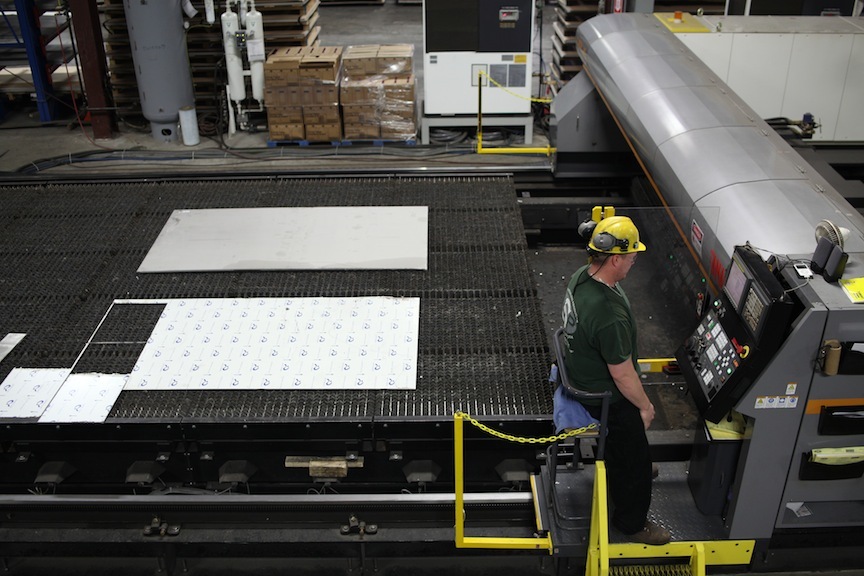Home /
Stainless Steel Plate 317L ASTM A240
317L Stainless Steel Plate Overview

317L stainless steel plate is an austenitic, molybdenum-bearing grade of stainless steel with increased resistance to chemical attack when compared to basic chromium-nickel alloy such as 304. Due to its chemical composition, this steel plate offers higher creep strength, stress to rupture and tensile strength, specifically at elevated temperatures. This stainless steel plate is a low carbon grade which results in greater resistance to sensitization during welding and other important thermal processes.
This stainless steel plate is available for purchase at Penn Stainless Products in a variety of length, widths, and thicknesses. It can be purchased in plate mill plate thickness ranging between 0.188” and 1.0”. Other thickness and a variety of lengths and widths are available, consult with a member of the Penn Stainless Products team.
Chemical Composition of 317L Stainless Steel Plate
This stainless steel plate is comprised of between 18.0% and 20.0% chromium and between 11.0% and 15.0% nickel. 317L also contains between 3.0% and 4.0% molybdenum; this is the element that gives this grade of stainless steel its unique properties. Also contained within 317L is at most 2.0% manganese, 1.0% silicon, 0.045% phosphorous and 0.03% sulfur. Another element that makes this grade of stainless steel unique is the carbon content. 317L stainless steel plate contains up to 0.03% carbon.
Mechanical Properties of 317L Stainless Steel Plate
Because of the inclusion of molybdenum, this stainless steel plate has an increased tensile strength of 86 ksi and a yield strength of 38 ksi. This grade of stainless steel plate also has a module of elasticity of 29,000 ksi. Alloy 317L has a poisons ratio of 0.27-0.30 and its elongation at break (in 55mm) is 55.0%. This stainless steel plate also has a hardness of 85 on the Rockwell B hardness scale.
Physical Properties of 317L Stainless Steel Plate
This stainless steel plate has a density of 0.29 lbm /in^3. Between 77℉ and 212℉ the coefficient of thermal expansion is 9.2min/in, between 77℉ and 932℉ the coefficient of thermal expansion is 10.2 min/in and between 77℉ and 1,832℉ 832℉ is 10.8 min/in. The electrical resistivity of this grade of stainless steel is 31.1 mW/in. The thermal conductivity of this stainless steel plate is 14.6 BTU/hr-ft between the temperatures of 68℉ and 1,832℉. The specific heat of the type of plate is 0.11 BTU-lbm between 32℉ and 212℉.
Specifications
| 317L |
|---|
| ASTM A240 |
| ASTM A480 |
| UNS S31703 |
| ASME SA240 |
Applications and Usage
This grade of stainless steel plate has a wide range of applications in a variety of manufacturing segments. This grade of plate is very useful in the air pollution control industry; it is commonly used in flue gas desuperization systems (FGD). This type of plate is also highly effective in the chemical and petrochemical processing industry. This grade of stainless steel has a high resistance to strong, corrosive chemicals, making it extremely useful in these industries as well as the pharmaceutical industry and in the production of explosives. This stainless steel plate is also commonly used in the food and beverage industries, specifically on the processing end. It is also used in the petroleum and power generation industries as well as the pulp and paper industry. This stainless steel plate is very useful in these environments due to the inclusion of molybdenum and its carbon content.
Processing and Fabrication Options
- Plasma cutting
- Plate saw cutting
- Shearing
- Laser cutting
- Waterjet cutting
- Forming
- Welding
- Machining
- Plate leveling